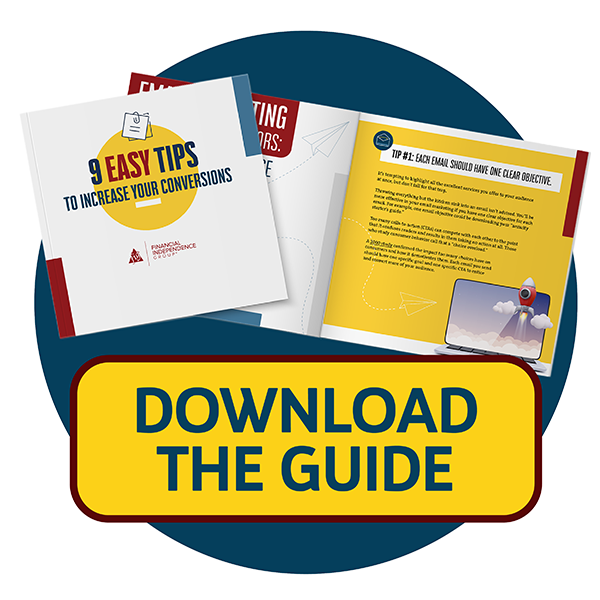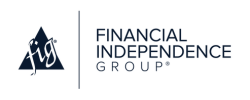Updated October 18, 2024, at 3:36 PM
Most financial advisors pride themselves on providing excellent service to all their clients, regardless of their level of wealth.
However, an advisor with a mature book of business who wants to remain profitable without burning the candle at both ends needs to develop a more pragmatic approach.
Enter the art of client segmentation for wealth management.
Why Client Segmentation for Wealth Management?
Client segmentation for financial advisors can be an excellent way to serve each tier of your clientele adequately while leaving room to grow your relationship with your top clients.
By categorizing your existing client relationships and developing an internal service model for each one, you’re able to prioritize how your time is spent. You can probably name your top 10-15 clients off the top of your head, but in order to segment your whole book, you need to develop an intimate understanding of how each client either contributes or detracts from your business.
Equally important, you must be able to quantify the time and effort it takes to serve each client so you can determine profitability for each household. Can you answer these questions about your book of business?
• How many clients do I have?
• Which ones bring in the most revenue?
• Which ones are most profitable to serve? (This isn’t the same as the
revenue question above.)
• How fast are we growing and in which areas?
• Are we particularly strong with a certain subset or niche of clientele?
• How would we define our perfect, ideal client?
It’s understandable to be sentimental about your clients, especially those who’ve been with your practice from early on. However, now’s your chance to take a hard look at how profitable even your high net worth (HNW) clients are. Every book has wealthy clients with high assets under management (AUM) but who require enormous efforts to serve, thus lowering their profitability.
By focusing your efforts on the top 10-20% of your book and maintaining the middle, you can disengage with the bottom portion of your book while increasing revenue and still having time to develop new business.
Client Segmentation Example
| Segments | Value Definition | Service Standard to Provide |
|---|---|---|
| Platinum | Essential to Firm (top 5-10% of clients) | World-class service |
| Gold | Very Valuable (next 20% of clients) | First-class service |
| Silver | Nice to Have (meets criteria for profitability) | Business-class service |
| Bronze | Any Other Client | Standard service |
| X-List | Unsuitable | Polite and compliant goodbye, with a degree of warmth |
Choosing Client Segmentation Metrics
Once you’ve answered the important questions about your clients and gathered the information for later analysis, it’s time to select your segmentation criteria.
Many financial advisors start and end with simple calculations based on AUM, however, there are other important drivers for client segmentation. It’s important not to abide by hard and fast rules, but to include enough flexibility in the segmentation model to include special cases and niches that may provide profitable expansion for your wealth management business.
Specialization is a great way to improve profitability and establish a reputation for understanding the particular needs of a community. Many financial advisors seek to work with clients in a niche, such as a particular profession or industry. Examples could be doctors, pilots, or engineers.
When developing a client segmentation list for wealth management, make special consideration for clients who are part of a professional or affiliated group you’d like to focus on. Even clients who you might not think belong in your Platinum category might be able to give you experience serving your niche market and may put you in the path of other clients in that niche.
For example, if your target niche is medical doctors in private practice, the greater number you have in your book, the better you’ll become at servicing them and the more referrals you’ll win.
The metrics underlying your segmentation process can take several forms. Here are a few popular client segmentation options for wealth management firms:
Client Segmentation Metric #1: Total Net Worth
Total net worth can include assets held elsewhere that are completely tied up. These may be important to include because many HNW clients have a significant portion of their wealth in real estate or privately-owned businesses.
The advantage of this system is that it doesn’t necessarily privilege clients with more AUM over wealthy clients who have significant outside assets, leaving both in the upper service categories, and allowing you to grow both relationships.
Client Segmentation Metric #2: Total Financial Assets
Another popular option is to segment by total financial assets, including assets and accounts held away from you. Many clients, either by habit or design, choose to spread their investable assets among multiple advisors and investment accounts. Their reasons may be to spread their risk among multiple advisors or to maintain control over some assets.
The advantage of this approach is it allows you to include assets that you might be able to bring over to your practice.
Client Segmentation Metric #3: Assets Under Management
This is probably the most common approach used by financial advisors across the country to segment their clientele. Using the AUM method, clients are categorized by the financial assets directly under your control.
The downside of this arrangement is that if a client has outside assets with other advisors (which they could conceivably bring over to you), they may fall into a lower segment, risking the future of the relationship.
Related: Tips to Get Compelling Client Testimonials Under the SEC Ad Rule
Alternative Client Segmentation Methods
While the previous segmentation metrics concern themselves with client assets, only revenue helps you make your mortgage payment and put food on the table.
Clients who are currently your top revenue generators are your best clients, and there are a few metrics that you’ll find useful when segmenting clients by revenue:
• 12-month revenue per client
• Client’s profession or important affiliation
• Return on assets (ROA)
• Effort to serve (get input from all client-facing team members)
• Number of referrals per client
Your Four Types of Clients
Platinum: These are your very best clients. You may only have a few. These clients are Platinum not only because they have a lot of money invested with you, but because of the quality referrals they generate, and how easy they are to work with.
Gold: These clients are successful professionals, affluent retirees, and small business owners. These are also people you want to clone.
Silver: The object here is to promote Silver clients to the Gold level by spending more time profiling and gathering assets that you don’t have. Just because someone is at the Silver level this year, doesn’t mean he or she will be a Silver client forever.
Bronze: Your Bronze clients are those who generate very little income for you. These clients can consume a substantial portion of your time, and you must be always diligent that you’re not committing more time than is necessary to professionally service them.
What Financial Advisors Should Do After Segmenting Clients
Segmentation isn’t an end in itself but is helpful when combined with client service protocols developed for each segment. It’s critical that all members of your team participate in and adhere to service standards.
Once you’ve completed the segmentation, you’ll find that some clients are simply not worth keeping. Reasons may include unprofitability, misalignment with your practice’s focus, or a mismatch in personality or investment style. Some clients in this category may go away on their own once you disengage, but some may need a more direct approach. It can be difficult to contemplate firing a client, but it’s necessary to save your time for profitable relationships.
Whatever your reason for breaking up with a client, the best approach is the direct one. Honestly address the situation and inform the client that you’re no longer able to meet their advisory needs. Regardless of why you want or need to dismiss a client, you should never feel guilty about the decision to sever ties when it allows you to increase the value you provide to your remaining clients.
Finally, the clients you decide to keep and the clients you take on in the future all need to be informed about your segmentation criteria. Of course, we don’t recommend telling your Bronze clients that they’ll get different
services from your Gold and Platinum clients, but by showing them your menu of services we’ve created below, you can easily and professionally communicate your service levels and fees to clients and prospective clients.
This may also help you gather additional assets, as some clients will be motivated to try and reach a higher level. However, when it comes to informing existing clients of the “enhancements” you’ve made, we recommend having the conversation in-person during a review rather than by mail or email.
Related: 12 Habits That Build a Killer Client Appreciation Program
Client Segmentation Examples
Here are some common ways you can break down your client segmentation based on various categories.
Investable Assets
Platinum: $1 million or more
Gold: $350,000 – $999,999
Silver: $150,000 – $349,999
Silver or Bronze: $50,000 – $149,999
Bronze: $49,000 or less
Yearly Income to the Firm
Platinum: $10,000 or more
Gold: $7,000 – $10,000
Silver: $5,000 – $7,000
Bronze: $5,000 or less
Referral Source
Platinum: Provides 4 or more referrals regularly
Gold: Provides 3 referrals regularly
Silver: Provides 1-2 referrals regularly
Bronze: Provides 1 referral occasionally
Ease of Service
Platinum: An absolute delight to work with
Gold: Clients are coachable, flexible, and friendly
Silver: Relationship is comfortable
Bronze: Clients are amiable at a minimum
Center of Influence
Platinum: Trusted professional with many connections
Gold: Holds a position of respected leadership
Silver: Owns a business or active part of a social club
Bronze: Limited social life
Referred by Existing Client
Platinum: Close enough to the referral source that it’ll affect your relationship with the source
Gold: Close enough to the referral source that it might affect your relationship with the source
Silver or Bronze: Relationship with the referral source will not affect your relationship with the source
Sample Service Menu for Client Segments
| Client Segment | Service Standard |
|---|---|
| Platinum Clients | 1 annual review meeting 1 6-month review meeting Phone call for alternate quarters VIP access to corporate hospitality (golf rounds, baseball tickets, lunch, other events) Special occasion cards Weekly emails and monthly letters Quarterly research papers Seasonal magazine Invited to all social and education client events Investment lunch or dinner (with an additional guest) Ultimate phone and email priority |
| Gold Clients | 1 annual review meeting 1 annual phone call from advisor 2 (bi-annual) phone calls from advisor’s assistant Special occasion cards Weekly emails Monthly letters Quarterly research papers Invited to all social and education client events Investment lunch or dinner (with an additional guest) High phone and email priority |
| Silver Clients | 1 annual review meeting 2 (bi-annual) phone calls from advisor’s assistant Special occasion cards Weekly emails Quarterly research papers Invited to most client events Normal phone and email priority |
| Bronze Clients | 1 annual phone review with advisor 1 annual phone call from advisor’s assistant Weekly emails Invited to select educational events Normal phone and email priority |
In Review: 6-Step System to Client Segmentation for Wealth Management
The work put into client segmentation for financial advisors will pay off, but it’s something that’ll be fluid and will need regular maintenance to keep your segmentations in tip-top shape.
Remember these six steps to segmenting clients:
- Define your ideal client: Identify drives of profitability, or value, in your existing client relationships.
- Create a rating system: Make your system accessible to all team members to accurately capture the metrics you want to use.
- Test your rating system: Rate a subset of clients as a test for the suitability of your rating model to ensure it doesn’t have a large margin of error.
- Rate your clients: Based on your rating system, comb through your client list and rate each one carefully.
- Notate the segmented records: Enter each client’s segment in your CMS so that all team members know how to service them.
- Update and maintain your segmentations: Create a process to update client segment ratings and to rate new onboarding clients. Make this part of your annual review process for existing clients and when onboarding new clients.
Keep Reading: 6 Tips to Help Financial Advisors Connect With Millennials
For Financial Professional Use Only



